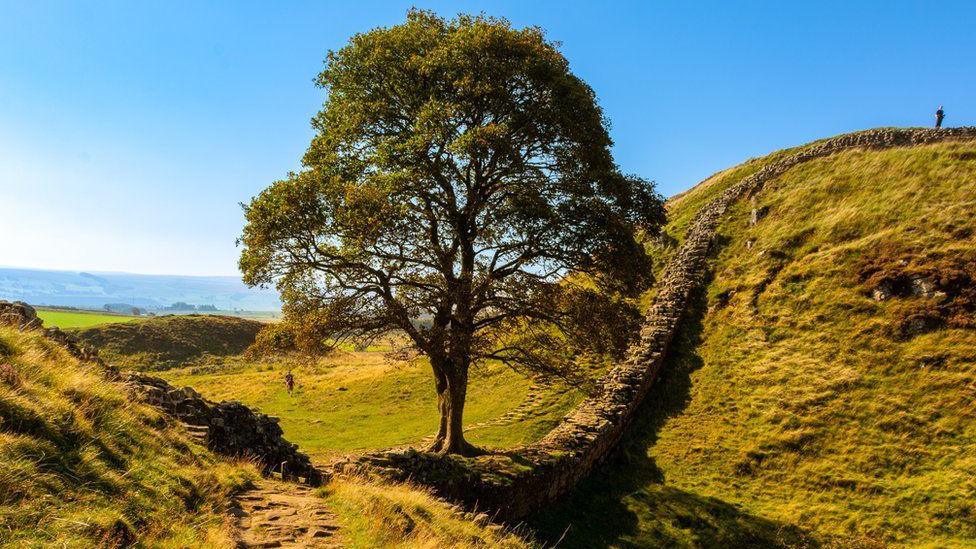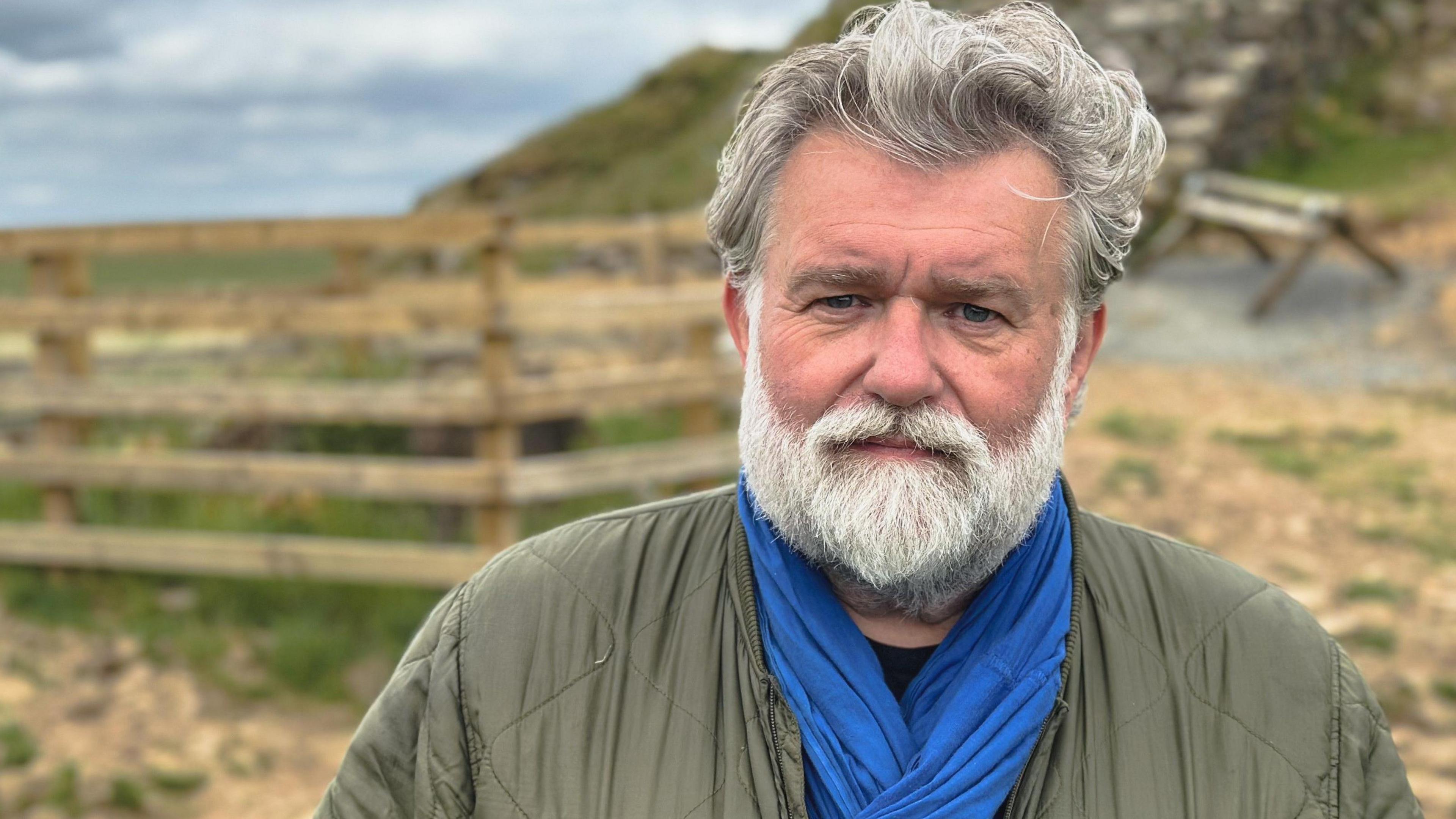Who planted the Sycamore Gap tree?
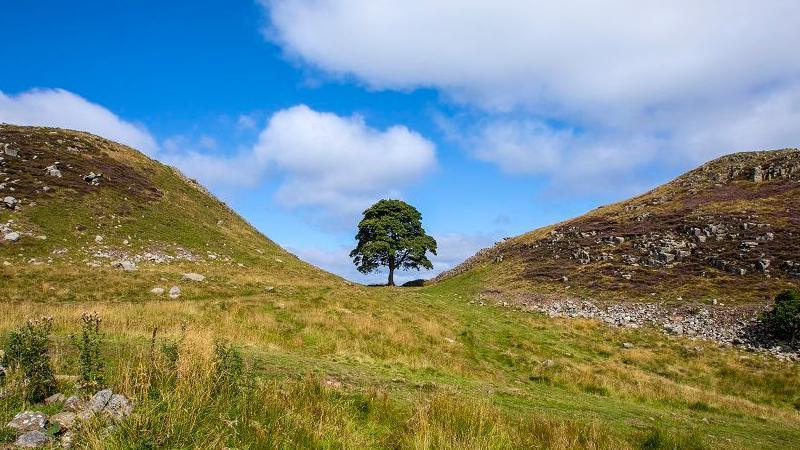
The Sycamore Gap tree was estimated to be about 150 years old before it was felled
- Published
When the Sycamore Gap tree was felled, many began to wonder how the tree, so perfectly positioned in the central dip of the Hadrian's Wall between Housesteads and Steel Rigg, Northumberland, came to be in the first place. Was it deliberately planted or simply "serendipity of the wind"?
Many suspect the hand of John Clayton.
Born to a wealthy family in 1792, Mr Clayton arrived as a child at Chesters Mansion House in Humshaugh, his parents' grand country bolthole.
He was four years old when he began roaming the fields rich with Roman ruins and his lifelong passion as an antiquarian began.
Mr Clayton's father, Nathaniel, bought the role of Town Clerk of Newcastle for the sum of £2,100 and handed the title to his son at a time of rebirth for the city.
John Clayton worked with the builder Richard Grainger and architect John Dobson to redevelop the city centre and the streets which still bear the men's names today.
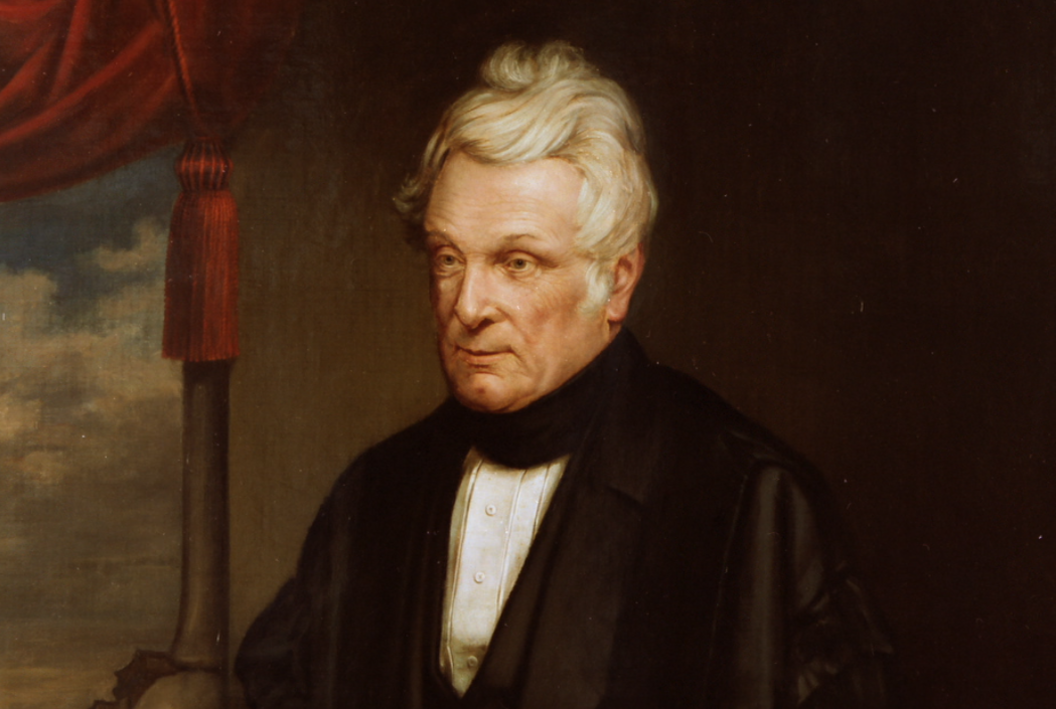
John Clayton spent a lot of time, money and effort trying to preserve Hadrian's Wall
But Mr Clayton's lifelong dream was to preserve Hadrian's Wall from stone robbers and the ruinous effects of time and weather.
The 73 mile (117km) wall had been pillaged to build many local farmhouses and even the mighty Hexham Abbey and Lanercost Priory.
According to archive documents, Mr Clayton would buy any parcel of land which came to market if it contained a section of the wall.
By the end of his life, he was responsible for a 20 mile (32km) stretch from Acomb to Cawfield Quarry.
It became known as "Clayton's Wall".
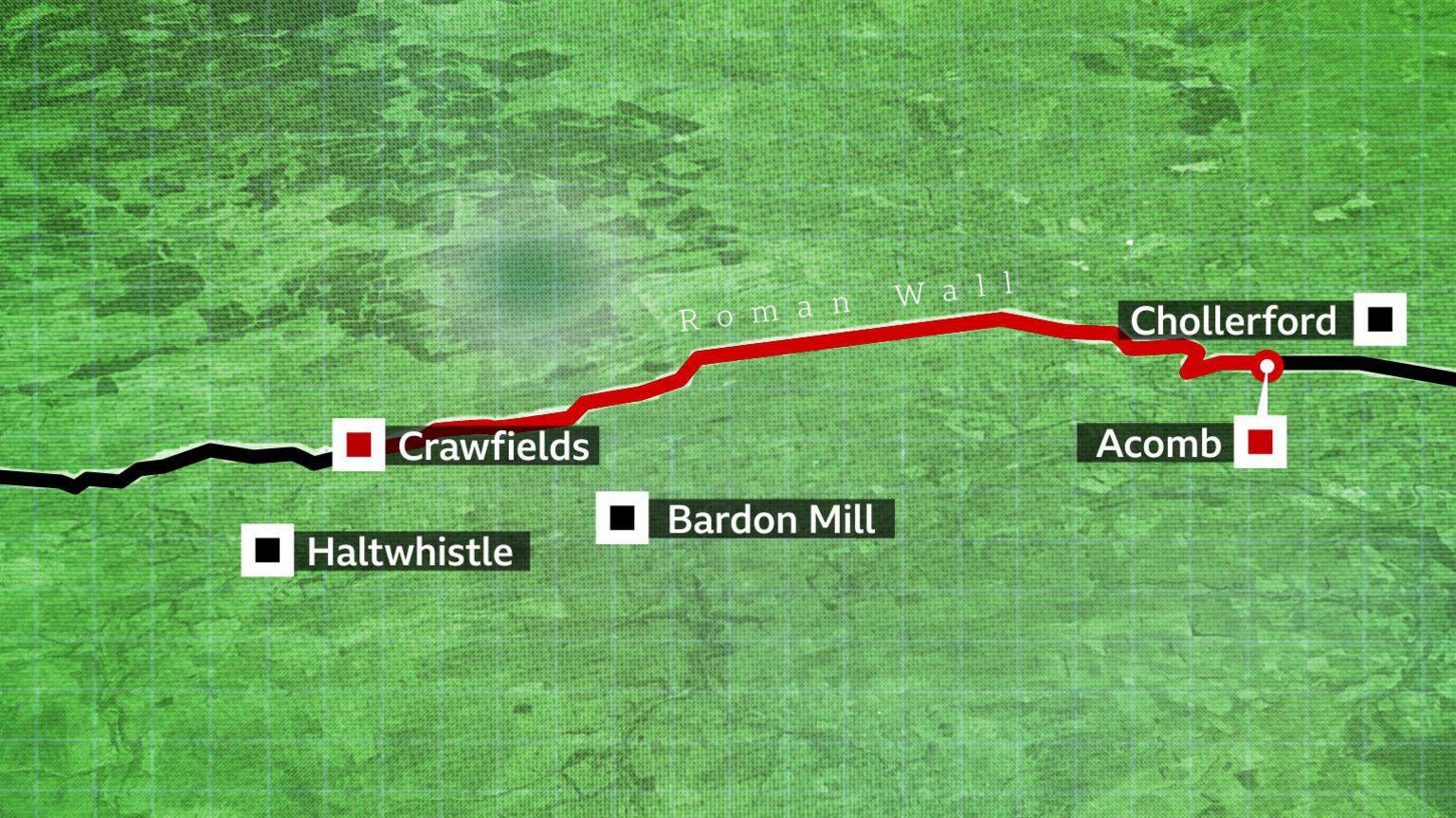
John Clayton took responsibility for a 20 mile (32km) stretch of Hadrian's Wall
But did John Clayton, who died at the age of 98 in 1890, plant the Sycamore Gap tree?
The tree was estimated to be about 150 years old, so the timings fit.
Dr Frances McIntosh, Hadrian's Wall collections curator for English Heritage said it "probably sprouted" in Mr Clayton's lifetime.
"Whether he would have planted something so close to the wall, we don't know," Dr McIntosh said.
"Sycamores are prolific self-seeders. However, he was interested in gardening and would possibly have become interested in it as an iconic view of the wall."
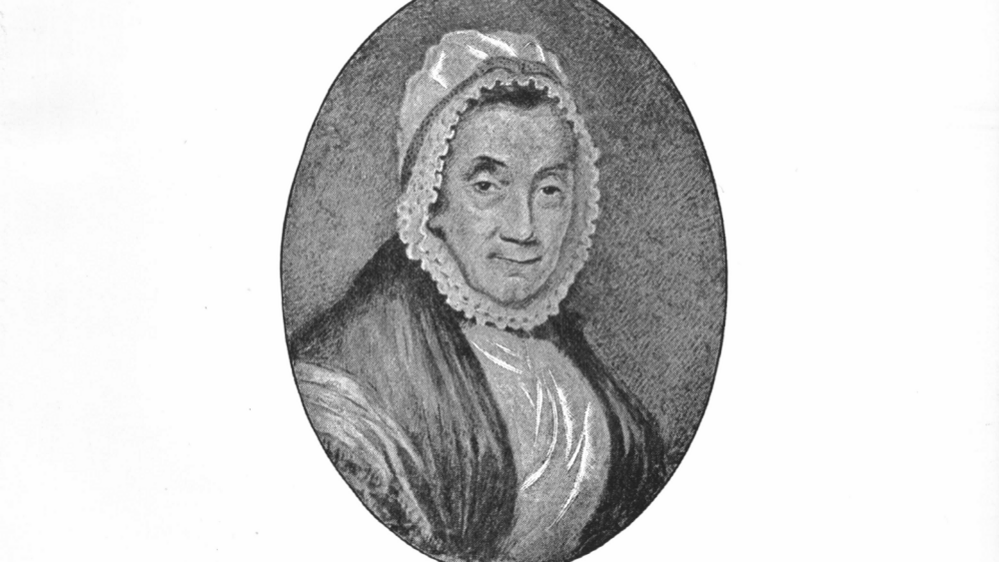
Bridget Atkinson was John Clayton's maternal grandmother
Mr Clayton, one of 11 siblings, never married and did not have children.
A distant relative, Richard Atkinson, said it is possible his ancestor planted the tree.
The book publisher from London is a descendant of Bridget Atkinson, Mr Clayton's maternal grandmother.
Asked if he is proud of his ancestor and his legacy, Mr Atkinson points to the dark side of his family's wealth.
"I have mixed feelings about family pride because if you feel pride in your family you should also feel shame for the things you don't approve of that they did," he said.
Mr Atkinson, who discovered Bridget Atkinson's family owned slave plantations in Jamaica for many generations, added: "I do feel fascinated to have found out more about John Clayton and recognise his contribution to the preservation of such an incredibly important part of history."
And on the origin of the tree?
"It's conceivable he may have dug the hole and planted the seedling, or it was done by his order, but it's also quite possibly serendipity of the wind,"
Follow BBC North East on X, external, Facebook, external, Nextdoor and Instagram, external.
Get in touch
Do you have a story suggestion for BBC Tyne?
Related topics
- Published15 July

- Published16 July
